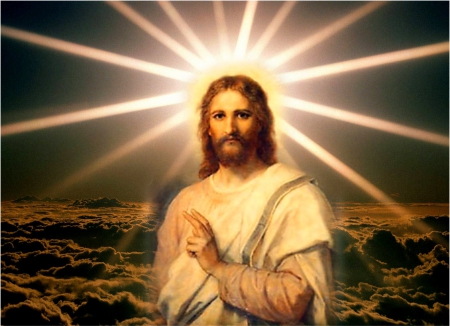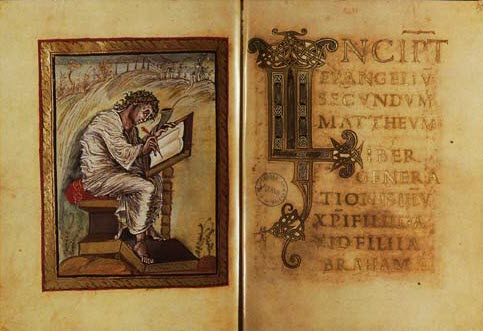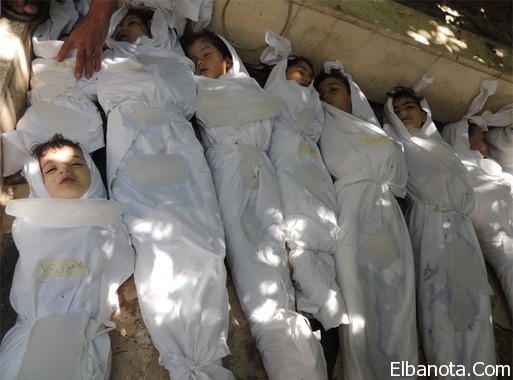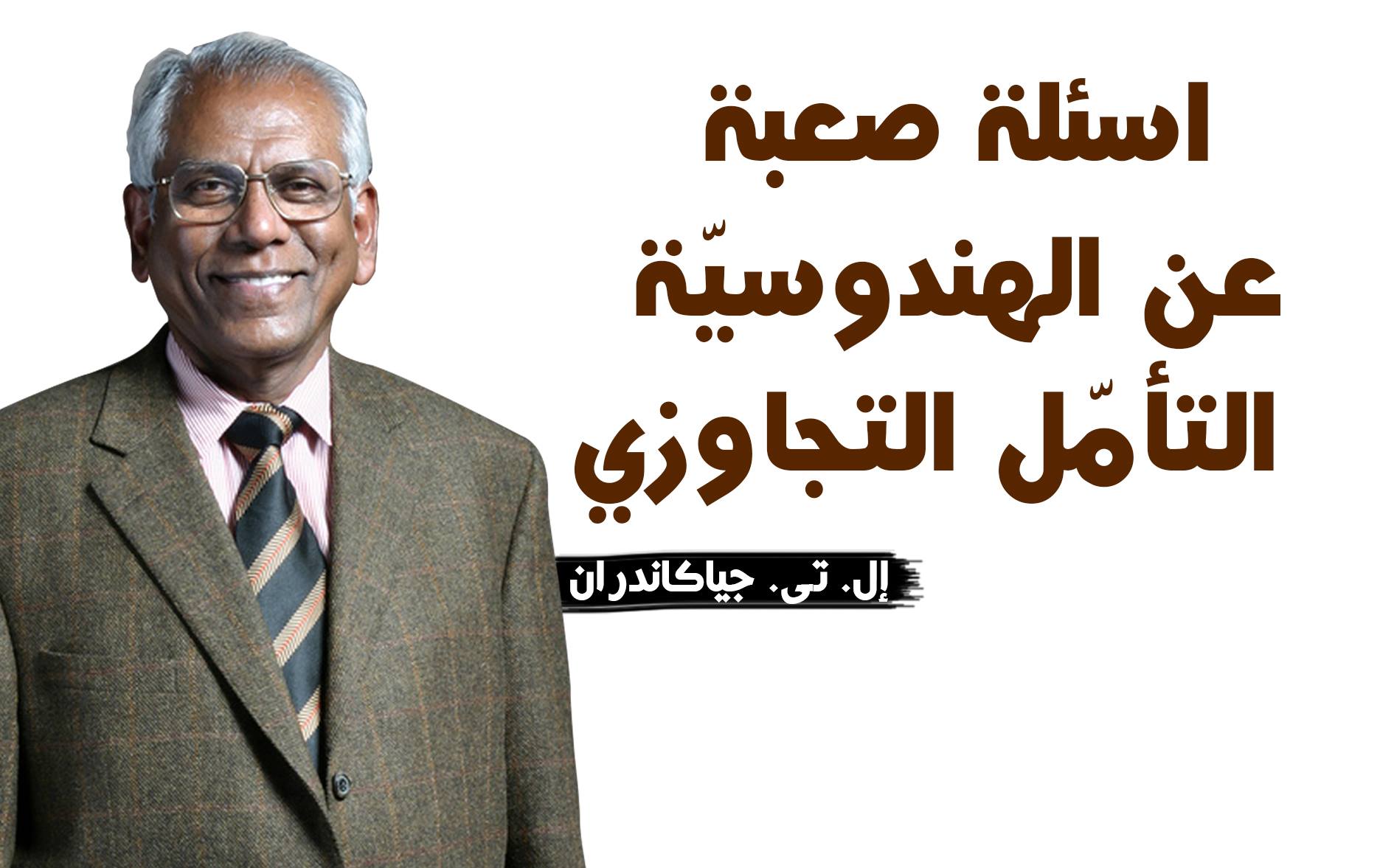هل مات يسوع مقتولا ؟ قراءة نقدية لمتى 49:27
فى كتاب القضية للمسيح حينما سال لى ستروبل فى لقاءه الصحفى مع بروس متزحر عميد النقد النصى فى القرن العشرين كم عدد تعاليم وعقائد الكنيسة المعرضة للخطر بسبب هذة الاختلافات فاجاب بثقة انا لا اعرف اى عقيدة معرضة للخطر
واكمل وقال
اهم هذة التغييرات لا تسقط اى عقيدة من عقائد الكنيسة
موضوعنا اليوم قراءة نقدية لقراءة غريبة واضافة شاذة لنص انجيل متى يُعتقد انها تؤثر على نظرتنا لموت المسيح ونظرا لدسامة الموضوع فسأحاول بقدر استطعاتى ان ابسط الموضوع والمعلومات
الموضوع ساقسمه الى 4 اجزاء
1-عرض المشكلة النصية
2-الشواهد النصية و التعليقات النصية
3-الرد على بعض الاعتراضات
4-التقليد والادلة التاريخية
فى الليتورجية القبطية نصلى فى صلوات القسمة فى القداس الغريغورى ” ومزجت لنا كاسا من كرمة حقيقة التى هى جنبك الالهى غير الفاسد هذا الذى من بعد ان اسلمت الروح فاض لنا منه ماء ودم هذان الصائران طهرا لكل العالم”
ففى التقليد الكنيسى ثابت وراسخ للجميع ان فيضان الماء والدم من جنب المخلص قد تم بعد موت المسيح على عود الصليب حسب شهدة التلميذ الذى كان يحبه يسوع الذى شاهد وعاين وشهادته حق
فى انجيل معلمنا متى نقرا فى الاصحاح ال 27
27: 48 و للوقت ركض واحد منهم و اخذ اسفنجة و ملاها خلا و جعلها على قصبة و سقاه
27: 49 و اما الباقون فقالوا اترك لنرى هل ياتي ايليا يخلصه
27: 50 فصرخ يسوع ايضا بصوت عظيم و اسلم الروح
بعد جملة ” هل ياتى ايليا يخلصه ” اتت اضافة فى بعض المخطوطات ” ἄλλος δὲ λαβὼν λόγχην ἔνυξεν αὐτοῦ τὴν πλευράν, καὶ ἐξῆλθεν ὕδωρ καὶ αἷμα
ان يسوع طعن بالحربة وخرج ماء ودم ففى هذة الاضافة يقدم لنا تعارض بين رواية كلا الانجيلين عن توقيت طعن يسوع هل كان قبل موت يسوع ام بعد موت يسوع كما هو مذكور فى انجيل يوحنا
هذة هى الاشكالية ببساطة
لنبدأ بالرد
الشواهد الغير موجود فيها الاضافة
المخطوطات اليونانى الاتية
السكندرية وبيزا وواشنطن و Δ 33 157 1006 1241 1243 1342 579 892 f1 f13 205 565 1071 1424 700 1292 1505 1646 E F G H K Θ Π Σ 090 28 180 597 1009 1079 1195 1216 1230 1242 1253 1344 1365 1546 2148 2174 Byz Lect
فنجد ان الشواهد متوزعة بين نصوص سكندرية وبيزنطية وقيصرية وغربية
كما تشهد لها ايضا الترجمات الاتية
القبطية البحيرية والصعيدية
المخطوطات اللاتينية القديمة ita itaur itb itc itd itf itff1 itff2
itg1 ith itl itq itr1
فى اقدم صورها حيث ان المخطوط ita يرجع للقرن الرابع
والمخطوطات السريانى والقوطية والاثيبوبية والارمينية
بالاضافة لنسخ الفلجاتا اللاتينى للقديس جيروم
ومن الاباء
لا يعرف هذة الاضافة
العلامة اوريجانوس المؤرخ يوسابيوس القديس اغسطينوس القديس جيروم القديس هيلارى قوانين الاباء الرسل ودياتسرون تاتيان ( ولنا تعليق عليه )
ادلة ثبوت الاضافة
المخطوطات اليونانى
السينائية والفاتكيانية والمخطوطة L وبعض المخطوطات البيزنطية اقدمها من القرن التاسع U
ومخطوط قبطى وبعض مخطوطات الفلجاتا وبعض المخطوطات السريانى
والقديس يوحنا ذهبى الفم ” ولنا تعليق عليه “
هذة الاضافة يجب ان تعتبر ادخال مبكر ماخوذ من نص شبيه فى يوحنا 34:19
وهذا ما ذهب اليه ايضا روجر اومانسون
وقال ان محتمل ان هناك من كتب هذة الاضافة فى هامش انجيل متى وبعد ذلك ناسخ ادخل الهامش الى متن النص نفسه
وهذا ما قاله ايضا بروس متزجر عن كتابه النص اليوحناوى فى هامش انجيل متى ومن ثم ادخل فى متن النص
وهذا ما اكده باركلاى وفيليب ستين ان لجنة UBS اقرت بان هذة الاضافة من انجيل يوحنا
Newman, B. M., & Stine, P. C. (1992). A handbook on the Gospel of Matthew. Originally published: A translator’s handbook on the Gospel of Matthew, c1988. UBS helps for translators; UBS handbook series (864). New York: United Bible Societies
ان هذة الاضافة اخذت من انجيل يوحنا وادخلت فى انجيل متى فى مكان خاطئ.
ويقول معلقى NET bible
بالتاكيد هذة الاضافة اخذت من الانجيل الرابع بواسطة نساخ مبكرين وادخلت الى انجيل متى
وهذا نفس ما قاله الفورد ورائ ان اقحام النص الماخوذ من يوحنا فى هذا المكان نتيجة اهمال
وهذا ايضا ما قاله يوتلى حيث اقر بعدم اصالة تلك الاضافة وانها ماخوذة من انجيل يوحنا
بالنسبة للنسخ النقدية
لم تعتمده نسخة ubs الاصدار الرابع واعطت للقراءة القصيرة درجة B
y̠y 49 P: TR TEV Seg FC NIV VP REB
Aland, K., Black, M., Martini, C. M., Metzger, B. M., Wikgren, A., Aland, B., & Karavidopoulos, J. (2000; 2009). The Greek New Testament, Fourth Revised Edition (with apparatus); The Greek New Testament, 4th Revised Edition (with apparatus) (Mt 27:49). Deutsche Bibelgesellschaft; Stuttgart.
ولم تعتمدها نسخة نستل الاند فى الاصدار ال 27
وضعها ويستكوت وهورت بين قوسين

صفحة 166
يقول ان كل المحررين رفضوا العبارة فيما عدا ويستكوت وهورت وحتى هؤلاء وضعوها بين قوسين للدلالة على انها ممكن ان تكون اضافة

.
ولم يعتمدها تشندروف فى اصدراه الثامن بالرغم من ان هذا الاصدار تم بعد اكتشافه للسينائية
ثالثا الرد على بعض الاعتراضات
نص الدياسترون من موسوعة الاباء لا يوجد فيه الاضافة
3 Mk. 15:36b.
14 cf. § 12, 13, note.
4 Jo. 19:30a.
5 Mt. 27:49.
15 Or, Let us.
6 Lk. 23:34.
7 Lk. 23:46a; Jo. 19:30b.
16 Lit. lay down.
Tatian. (1997). The Diatessaron of Tatian H. W. Hogg, Trans.). In The Ante-Nicene Fathers Vol. X : Translations of the writings of the Fathers down to A.D. 325 (123). Oak Harbor: Logos Research Systems.
ومذكور طعن يسوع بعد موته
2 Lit. ripped.
18 Jo. 19:35.
Tatian. (1997). The Diatessaron of Tatian H. W. Hogg, Trans.). In The Ante-Nicene Fathers Vol. X : Translations of the writings of the Fathers down to A.D. 325 (124). Oak Harbor: Logos Research Systems.
فى تعليقات فيلند فيلكر يقول
ان فى تعليقات افرام السريانى هذة الاضافة وردت بعد متى العدد 55
فترتيبها بعد موت يسوع
ويكمل ويقول
وفى الدياتسرون العربى بعد العدد 54
الدياتسرون لا يصب فى صالح الاضافة وفى وجودها مكانها متفق مع التقليد اليوحناوى انه بعد موت يسوع وليس قبله
ثانيا تحليل كلام القديس سيرفيرس الانطاكى والتعليق على كلام ذهبى الفم
كلام ذلك القديس اورده كاملا فيلند فيلكر فى تعليقه النصى على هذا العدد وساحلل كلام ذلك القديس لانه مهم جدا
اولا فى خطابه لتوماس اسقف جيرمانيكا يقول
But that our Lord Jesus Christ our God was pierced in the side with a lance by that soldier after he gave up the ghost, and blood and water came forth from it in a miraculous manner, the divine John the Evangelist recorded, and no one else wrote about this
معنى ذلك ان الرب يسوع طعن بالحربة فى جنبه بعد ما اسلم الروح وخرج دم وماء من جنبه والوحيد الذى كتب عن هذة الحادثة هو يوحنا الانجيلى ولا غيره
ثانيا بيشهد على خطا من ادخل تلك العبارة الى انجيل متى جاعلا طعن يسوع بالحربة قبل موته وليس بعد تسليم الروح
But certain persons have clearly falsified the Gospel of Matthew and inserted this same passage, when the contrary is the fact, in order to show that it was while he was alive that the soldier pierced his side with the spear, and afterwards he gave up the ghost
الغريبة انه بيتكلم عن نسخة انجيل متى الاصلية التى وجدت مدفونة مع القديس برنابا واكتشتف فى عهد الملك زينو وقال انه لما فتح الانجيل وجده خاليا من تلك الاضافة
This question was examined with great carefulness when my meanness was in the royal city [Constantinople], at the time when the affair of Macedonius was being examined, who became archbishop of that city, and there was produced the Gospel of Matthew, which was written in large letters, and was preserved with great honor in the royal palace, which was said to have been found in the days of Zeno [ca. 474-491 CE] of honorable memory in a city of the island of Cyprus buried with the holy Barnabas, who went about with Paul and spread the divine preaching; and, when the Gospel of Matthew was opened, it was found to be free from the falsification contained in this addition, of the story of the soldier and the spear
يستهشد بيوسابيوس القيصرى على اصالة تلك الاضافة فى نسبتها للقديس يوحنا وليس القديس متى
Accordingly, you should know that Eusebius of Caesarea also who is called ‘Pamphili’, who wrote the canons of the gospel, and imitated those who wrote on this subject before him, and had more complete knowledge of this question than the others, in the 10th canon, in which he recorded the places peculiar to one of the evangelists, inserted this passage also about the soldier and the lance, saying that John alone recorded it
القديس يوحنا ذهبى الفم نفسه يشهد بان الطعن تم بعد موت المسيح
in the commentary on the same Matthew the Evangelist with regard to this same addition which we are now discussing, himself also said things that fit the truth, for he expressed himself thus: <<But another came up and perforated his side with a lance’. And what could be more wicked than these men? And who could be lawless like them? And who could be more savage than these same men, who showed their madness to such an extent, that they attacked a dead body. But do you mark how their madness was brought about for our salvation
وقال ان كل المعلقين لم يدرجوا تلك الاضافات فى تعليقاتهم ولا اوريجانوس الذى وصفه بانه كان يفحص تلك الامور بعناية ولا ديدموس ولا اى شخص كتب عن تلك القضية
But this addition to the narrative of Matthew the Evangelist has never been inserted by any of the earlier commentators who wrote, not by Origen, who examined such questions minutely, though he sinned in matters that are necessary for the truth of the faith of the church, nor by Didymus, nor by any other man who has written on this subject
فنجد ان الاباء انفسهم قد مارسوا النقد النصى وقالوا بان تلك الاضافة شاذة والوحيد الذى سجل لنا حادثة طعن يسوع هو الانجيلى يوحنا البشير
وفى زمرة الاباء التقليد الثابت والراسخ فى كتاباتهم هو ان جسد يسوع المائت هو من طعن بالحربة
فيقول اوريجانوس فى كتابه ضد كلسس
He puts this question in a spirit of mockery; but we shall show from the serious narratives of the Gospels, although Celsus may not like it, that it was no mythic and Homeric ichor which flowed from the body of Jesus, but that, after His death, “one of the soldiers with a spear pierced His side, and there came thereout blood and water. And he that saw it bare record, and his record is true, and he knoweth that he saith the truth
وينقل لنا الاب متى المسكين ايضا مقولة للعلامة اوريجانوس فيقول “
فى كل الاجساد الميتة يتجمد الدم ولا يخرج منها ماء نقى ولكن نجد فى المسيح العجيبة فى جسده وانه حتى بعد الموت كان فى الجسد دم وماء خرجا من جنبه “
وينقل لنا كلام امبروسيوس فيقول “
بعد الموت يتجمد الماء فى اجسادنا ولكن من الجسد الذى لا يفسد مع انه ميت نبعت منه حياة للكل الماء والدم اللذان خرجا منه الماء للاغتسال والدم للفداء “
والقديس يوحنا ذهبى الفم فى تعليقاته على انجيل يوحنا
يقول
when they came, brake the legs of the others, but not those of Christ. Yet these to gratify the Jews pierced His side with a spear, and now insulted the dead body
ويعلق العالم برنارد على اقتباس ذهبى الفم ويقول
انجيل نقوديموس الابوكريفى ” يعود للقرن الرابع ” ويذكر ان طعن يسوع كان بعد موته واعتمد فى مادته على مصادر اقدم من ذلك التاريخ
Klauck, H. (2003). Apocryphal gospels : An introduction (90). London; New York: T&T Clark.

هذا كان عن التقليد والاباء الشاهد لصحة التقليد اليوحناوى
بعد ان اثبتنا نصيا وتقلديا عدم ثبوت الاضافة وشذوذها
يتبقى لنا اخر جزئية فى الموضوع هل الاضافة تتفق مع التاريخ والناحية الطبية؟
الحقيقة المؤكدة هى لا
خروج الدم والماء من جنب المخلص بيان حقيقى ان هذا الجسد قد مات بالفعل ولا يمكن ان يتم ذلك والمسيح حى
عادة المصلوب لكى يموت على الخشبة يحتاج من يومين الى ثلاثة ايام
ولهذا تعجب بيلاطس البنطى من موت المسيح سريعا
Jesus died before the robbers did. According to Mk. 15:44, Pilate was surprised that He had died so soon; for in the case of a crucified person, death sometimes did not ensue for two or three days
Bernard, J. H. (1929). A critical and exegetical commentary on the Gospel according to St. John. Paged continuously. (A. H. McNeile, Ed.) (2:643). New York: C. Scribner’ Sons
فتاكيد تقرير بلاطس ان يسوع قد مات سريعا فى انجيل مرقس (مر 44:15) يثبت صحة تقليد انجيل يوحنا على موت المسيح السريع
لذلك فى نفس المرجع السابق يقول ان يسوع مات قبل الطعن طبقا لكلام بيلاطس
ونفس المرجع ايضا اضاف ان تلك الاضافة ادخلت الى انجيل متى فى زمن مبكر
وقال ان نظرية ان هذة الكلمات كانت جزء من انجيل متى وان يوحنا صحح العبارة بوضعها فى السياق الصحيح ذلك غير محتمل ولا يوجد دليل ان يوحنا يعرف انجيل متى
Bernard, J. H. (1929). A critical and exegetical commentary on the Gospel according to St. John. Paged continuously. (A. H. McNeile, Ed.) (2:644). New York: C. Scribner’ Sons.
نرجع لنقطتنا التاريخية
ماهو سبب موت المسيح ؟؟؟؟؟؟
يشرح لنا ذلك الدكتور ميثريل فى لقاءه مع لى ستروبل فى كتاب القضية للمسيح ويقول
كتاب القضية للمسيح تحقيق صحفى ترجمة سعد مقارى صفحة 265
بمجرد ان يعلق الشخص فى وضع رأسى فان الصلب يسبب بشكل اساسى موت بطئ جدا بالاختناق السبب هو الضغط على العضلات والحجاب الحاجز اللتين تضعنا الصدر فى موضع الشهيق واساسا لكى يخرج هواء الزفير لابد وان يضغط على قدميه لكى يخفالضغط على العضلات للحظة وبالقيام من ذلك فان المسامير تمزق القدمين وتظل المسامير تمزق القدمين من الداخل حتى تتوقف عند عظم الكعب
ويكمل
عندما يبطئ الشخص من تنفسه يصاب بحالة تسمى acidosis
وهذا يؤدى فى النهاية الى عدم انتظام ضربات القلب وفى الواقع عند اصبحت ضربات قلبه غير منتظمة ادرك يسوع انه عند لحظة الموت وقال يا ابتاه فى يديك استودع روحى ومات بالسكتة القلبية
واكمل وقال
حتى قبل ان يموت وهذا مهم ايضا فان الصدمة الناتجة عن تاثير فقد الجسم لكمية كبيرة من الدم مما نتج عنه زيادة فى سرعة ضربات القلب مما يؤدى الى توقف القلب ونتيجة لذلك يتجمع السائل فى الغشاء المبطن للقلب وهى حالة تسمى تدفق الدم حول القلب وكذلك تدفق الدم حول الرئتين
والنقطة الهامة

فخروج الدم والماء كان بسبب انفجار القلب وتبعها ذلك تجمع السائل فى كلا الغشائين المحيطين بالرئة والقلب
فلو كان يسوع طعن وهو على قيد الحياة وقلبه ينبض
فلماذا يخرج دم وماء؟؟؟؟؟؟؟؟؟؟؟
هذا ليس فقط تقرير الدكتور ميثريل بل تاكيد الكثيرين
فعلى سبيل المثال
(Treatise) argued that the flow resulted from a spontaneous rupture of the heart, together with a decomposition of the blood within the heart of Jesus. The common conclusion of these studies is that the separation of blood into a plasma and a transparent, yellowish fluid is not a medical impossibility. In this view, the purpose of this detailed description is to show that the death of Jesus was real
von Wahlde, U. C. (2010). The Gospel and Letters of John, Volume 2: Commentary on the Gospel of John (817). Grand Rapids, MI; Cambridge, U.K.: William B. Eerdmans Publishing Company
فانفجار القلب كان السبب الرئيسى للوفاة وبسببها انفصل الدم وهو ما قال عنه القديس يوحنا الشاهد العيان ” ماء “
وهذا نفس ما قاله الدكتور سترود ان هذة الظاهرة نتيجة انفجار القلب
The immediate cause of death was (it is said) a rupture of the heart, which was followed by a large effusion of blood into the pericardium. This blood, it is supposed, rapidly separated into its more solid and liquid parts
The Gospel according to St. John Introduction and notes on the Authorized version. 1908. Greek text and “Revised version” on opposite pages.; Edited by Arthur Westcott. (B. F. Westcott & A. Westcott, Ed.) (279). London: J. Murray.
ونفس ما قاله الدكتور سترود من مرجع اخر
Dr. W. Stroud (Physical Cause of the Death of Christ) argues that this fact proves that the spear pierced the left side of Jesus near the heart and that Jesus had died literally of a broken heart since blood was mixed with water
Robertson, A. (1997). Word Pictures in the New Testament. Vol.V c1932, Vol.VI c1933 by Sunday School Board of the Southern Baptist Convention. (Jn 19:34). Oak Harbor: Logos Research Systems
فالدليل التاريخى للصلب الرومانى وحتى الدليل الطبى يؤكد ان خروج الدم والماء من جنب المخلص يثبت بلا شك ان يسوع بالفعل قد مات وتحلل الدم وارتشحت السوائل فى الغشاءين المحيطين بالقلب والرئة فخرجوا عند الطعن
وهذا ما قاله
رافى زكرياس ونورمان جسلر فى كتاب
نقلا عن جورنال المجتمع الطبى الامريكى 21 مارس سنة 1986
لما تكلموا عن موت يسوع طبيا
قالوا
http://files.arabchurch.com/upload/i…4508146229.png
بوضوح وزن الدليل التاريخى والطبى ان يسوع مات قبل جرح جنبه
1-هذة الاضافة لا مكان لها فى انجيل متى على الاطلاق ومن المؤكد ان تقليد انجيل يوحنا هو الصحيح , يوحنا ذلك التلميذ الذى شاهد وعاين وشهادته حق وهذا ما قاله فيلند فيلكر فى تعليقاته النصية
2- تقليديا كل الاباء الذين تكلموا عن طعن يسوع تكلموا عن التقليد اليوحناوى ان الطعن تم بعد الموت وفند لنا القديس سيرفريس الانطاكى القضية برمتها
3-تاريخيا وطبيا خروج الدم والماء من جنب المخلص يثبت انه بالفعل مات وان القلب قد انفجر
فكل الطرق والوسائل تؤكد ان تقليد انجيل يوحنا هو التقليد الصحيح بلا شك
واقدم شاهد نصى على انجيل يوحنا هو البردية 66 التى تعود للقرن الثانى الميلادى
›̠In some manuscripts, indicates an Old Testament quotation or allusion.
Comfort, P. W., & Barrett, D. P. (2001). The text of the earliest New Testament Greek manuscripts (A corrected, enlarged ed. of The complete text of the earliest New Testament manuscripts) (463). Wheaton, Ill.: Tyndale House.
نص الدياتسرون العربى
وهذة الفقرة موجودة ضمن رواية القديس يوحنا للانجيل ولا توجد فى متى
ولالهنا كل المجد



